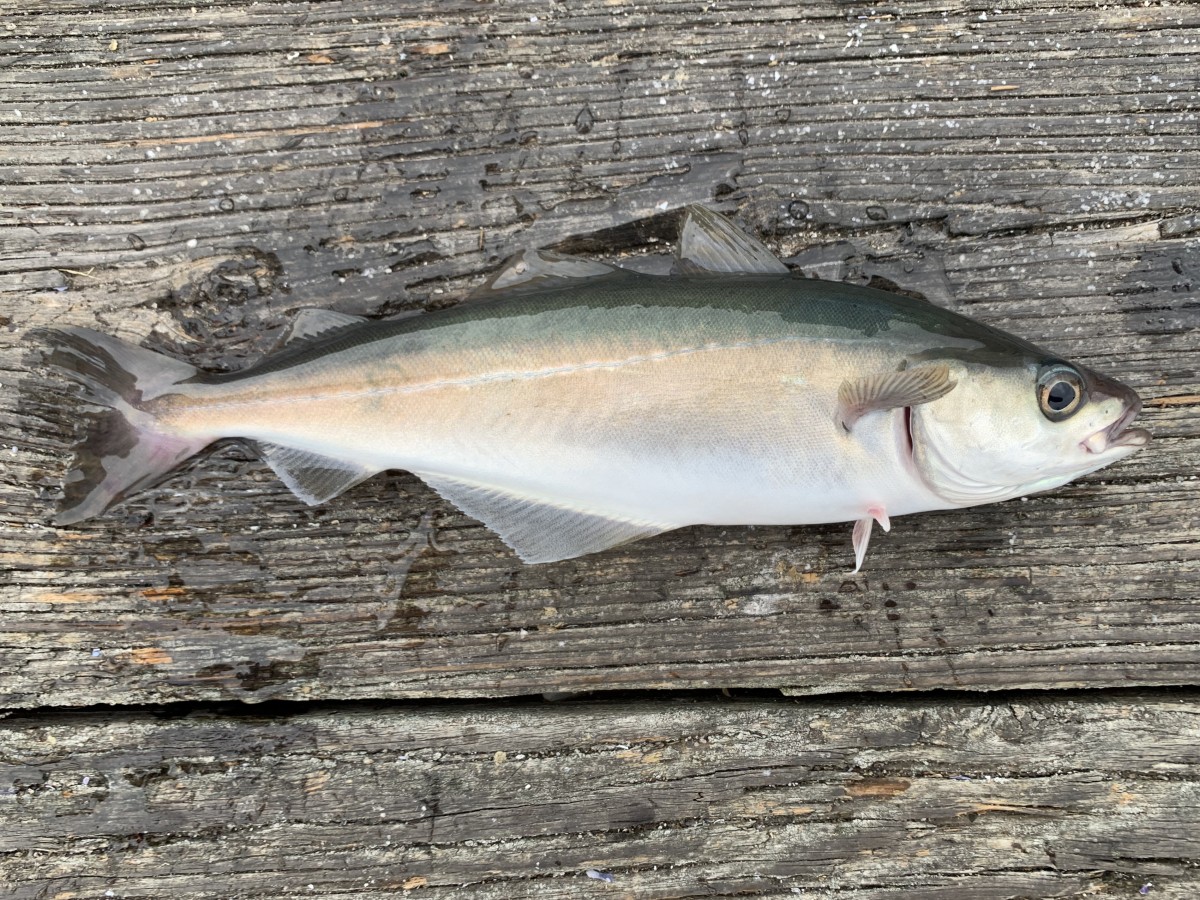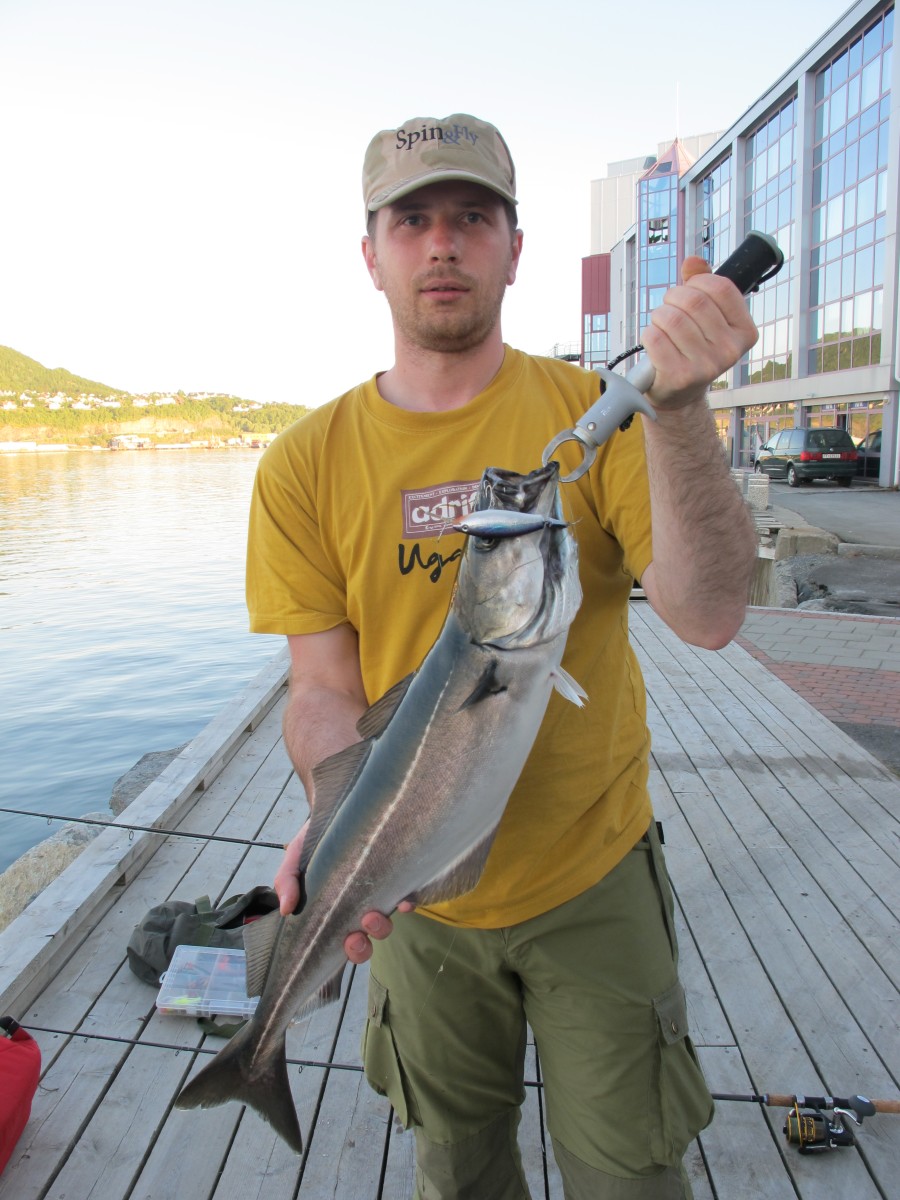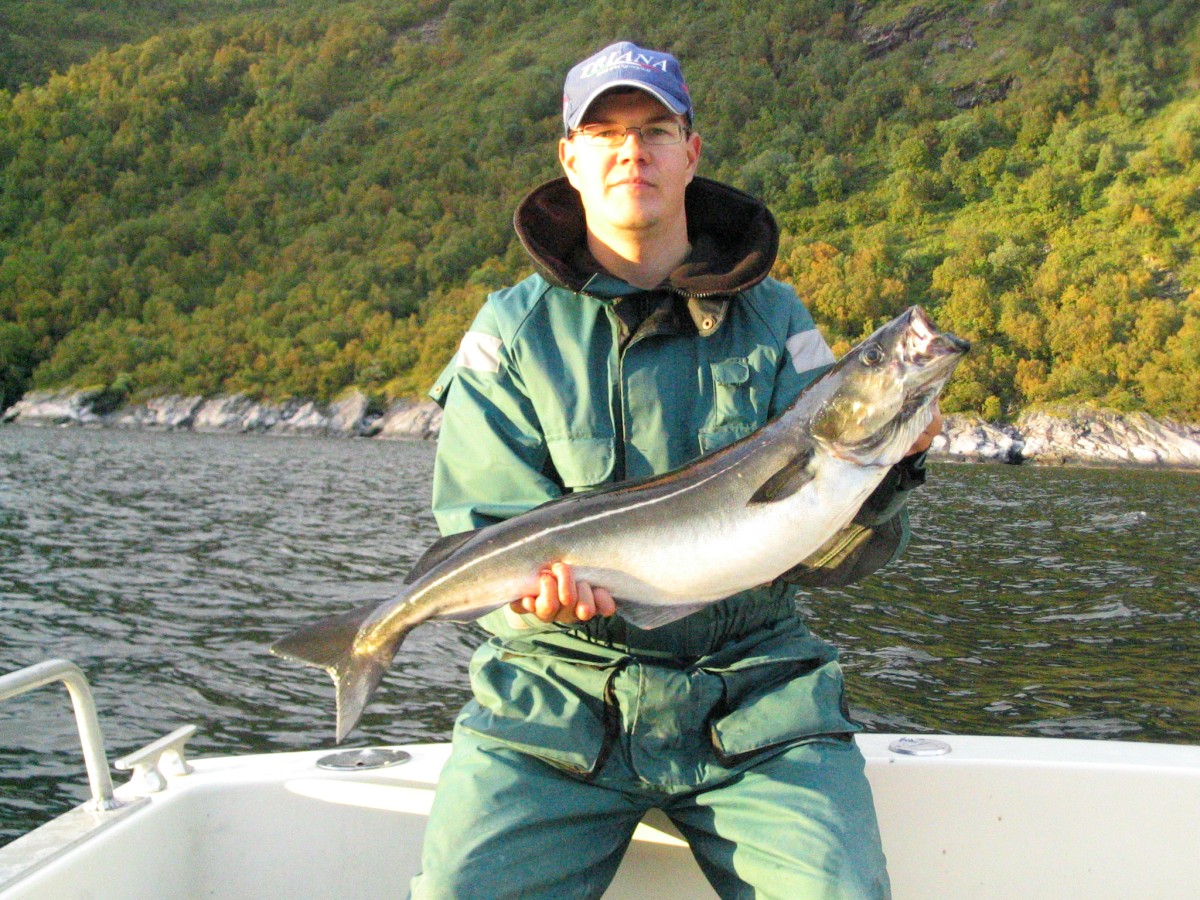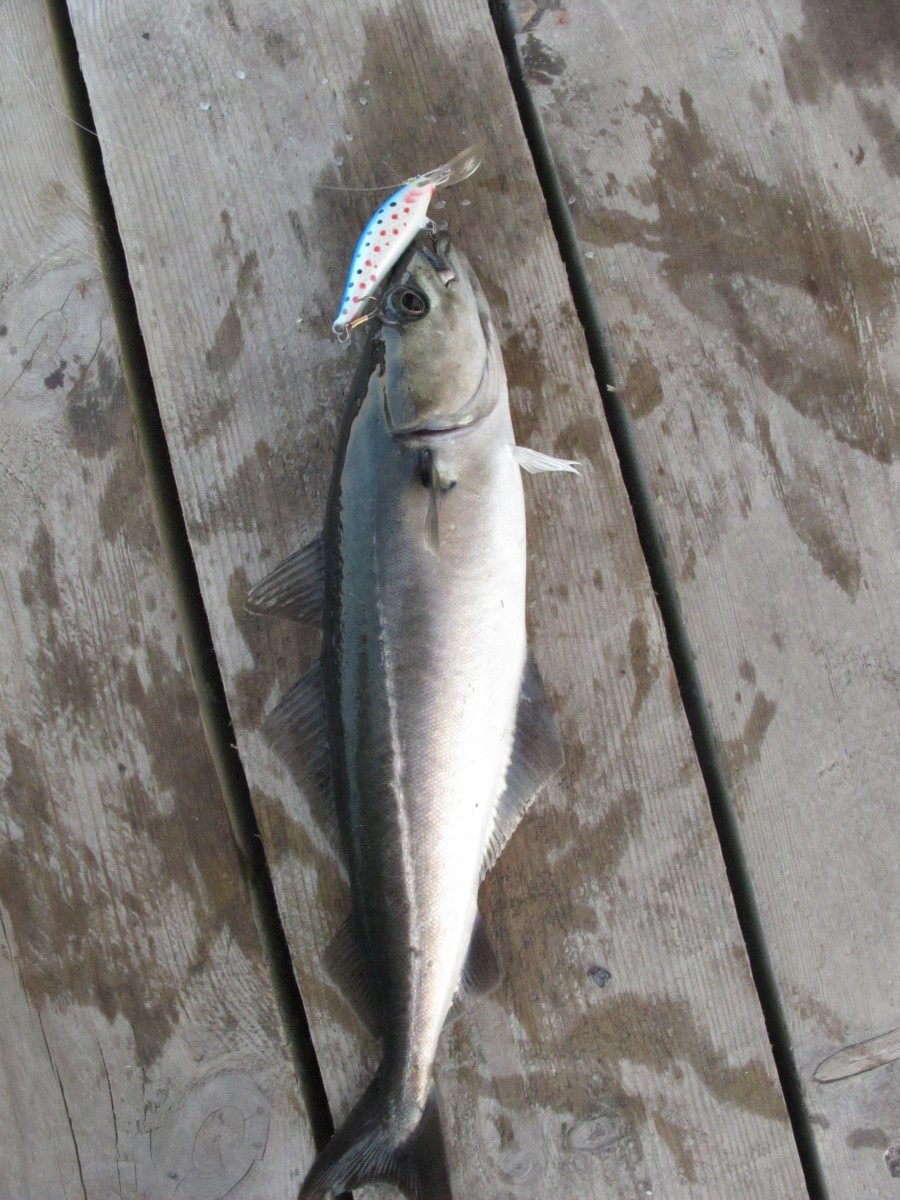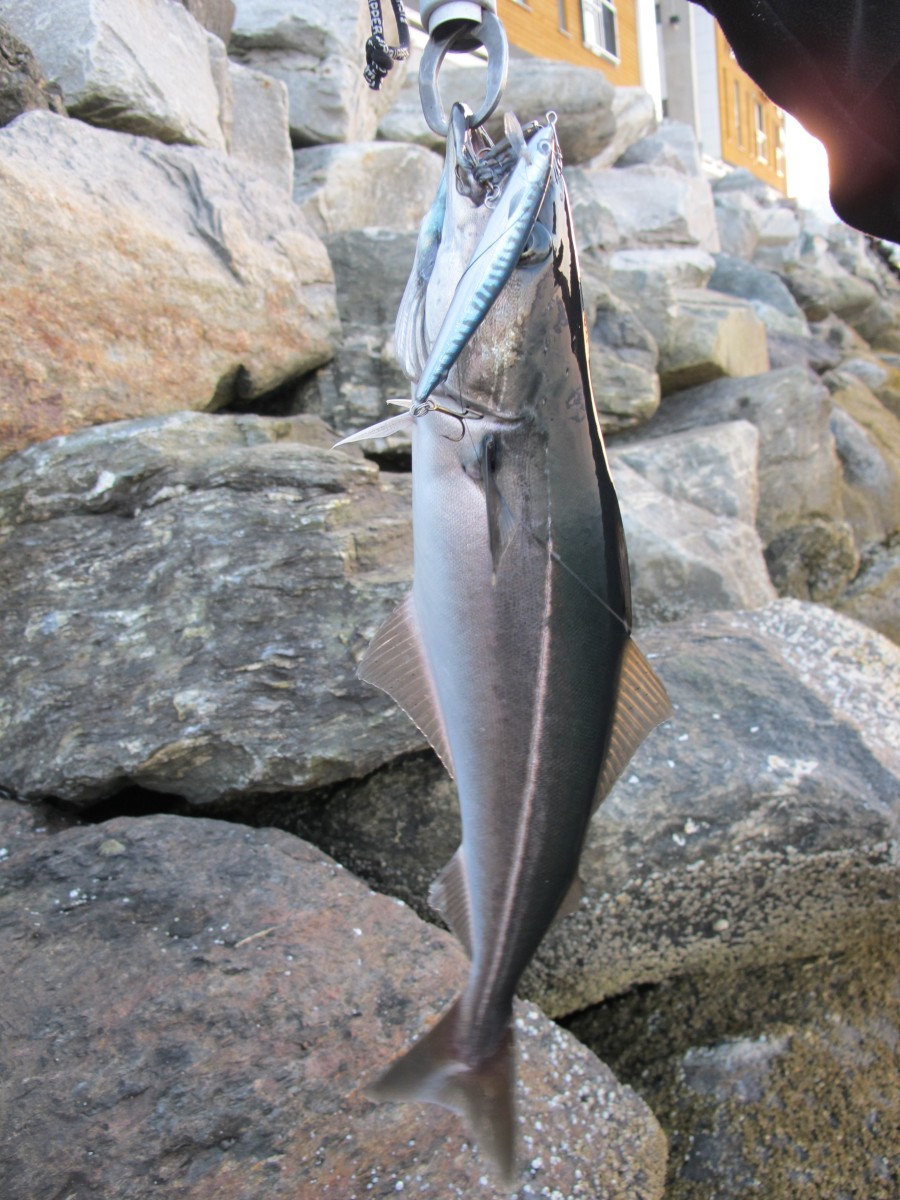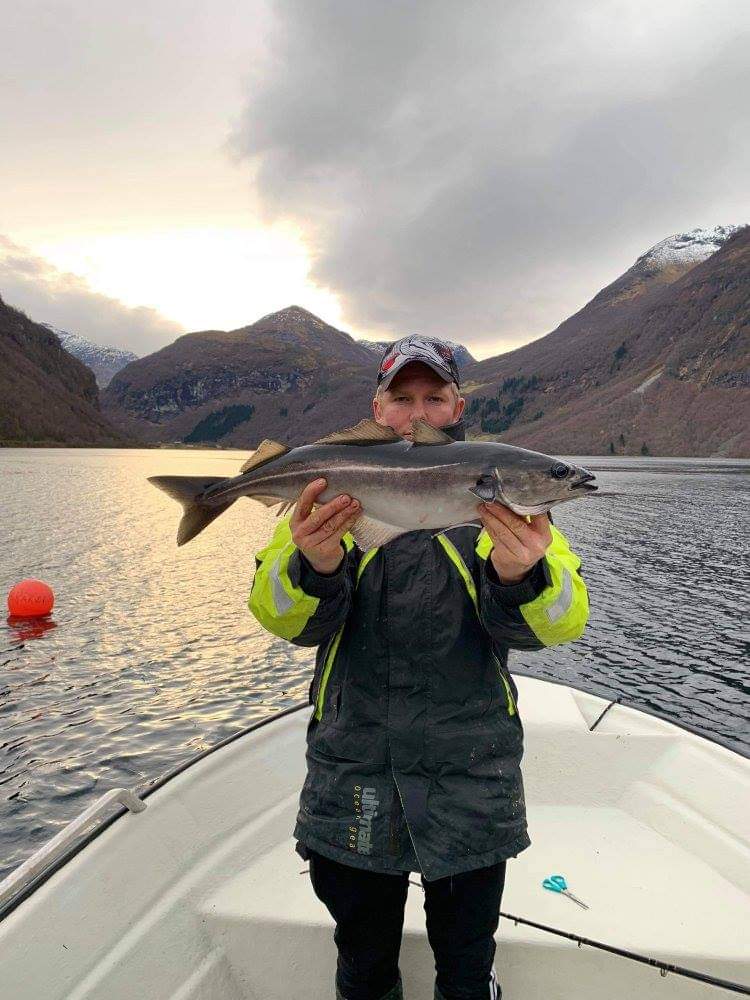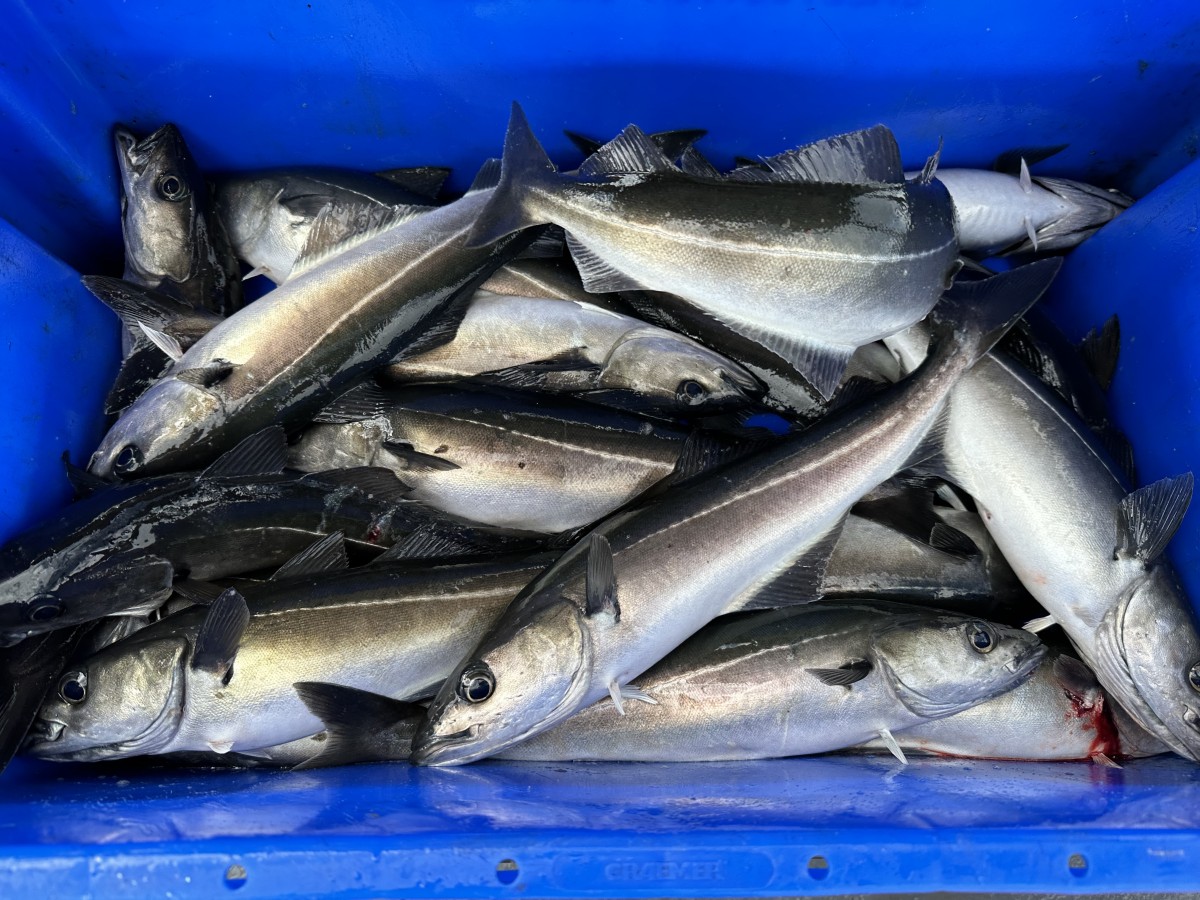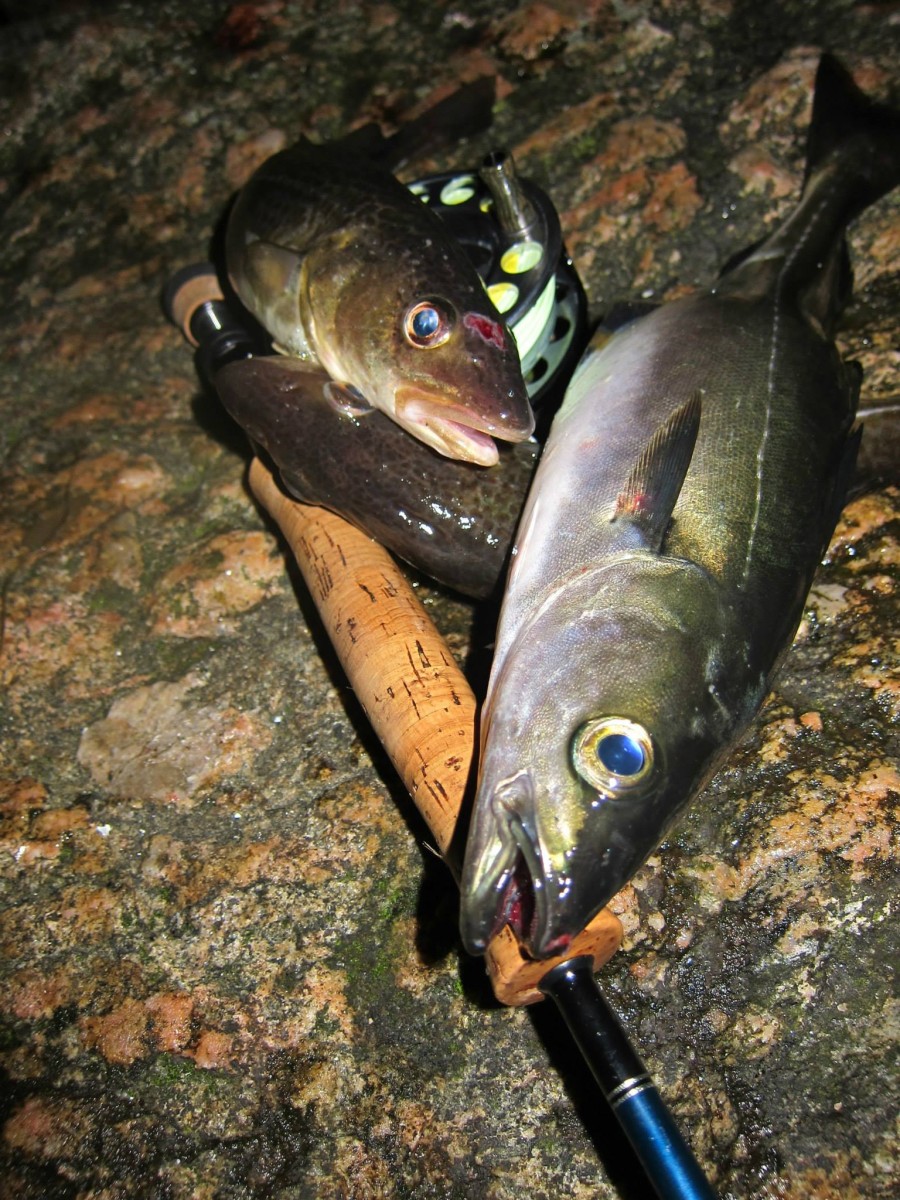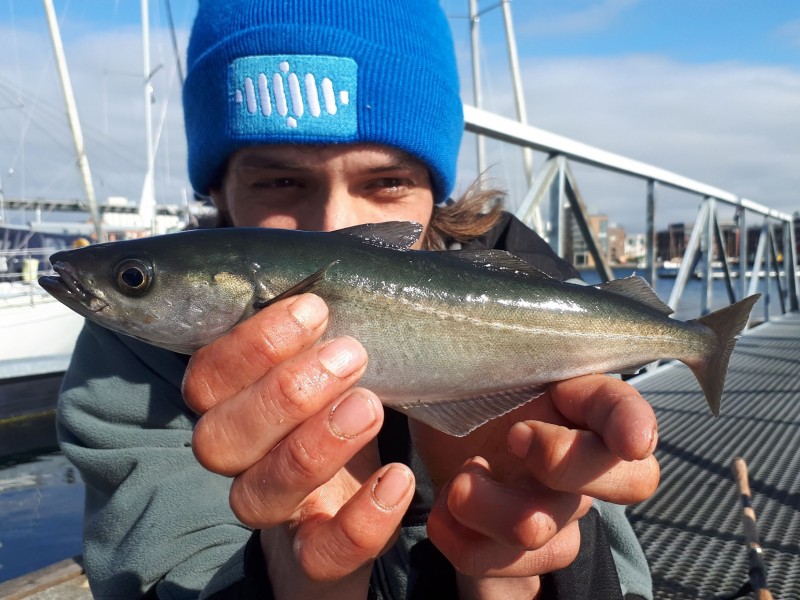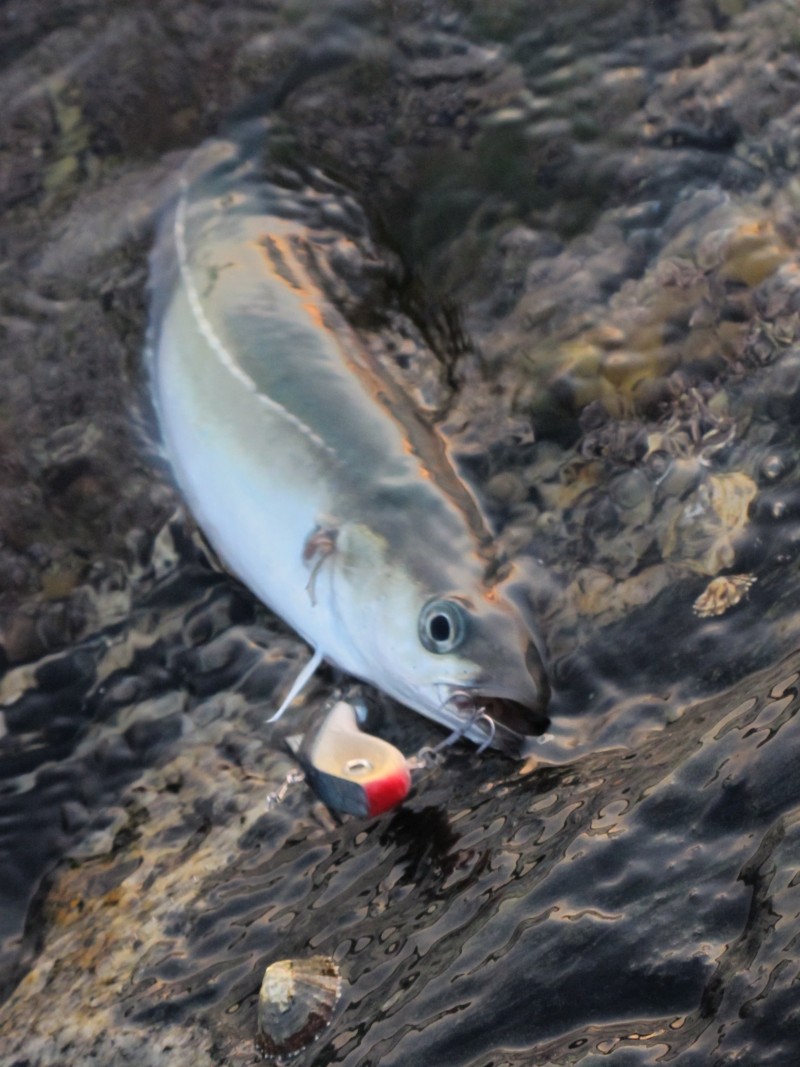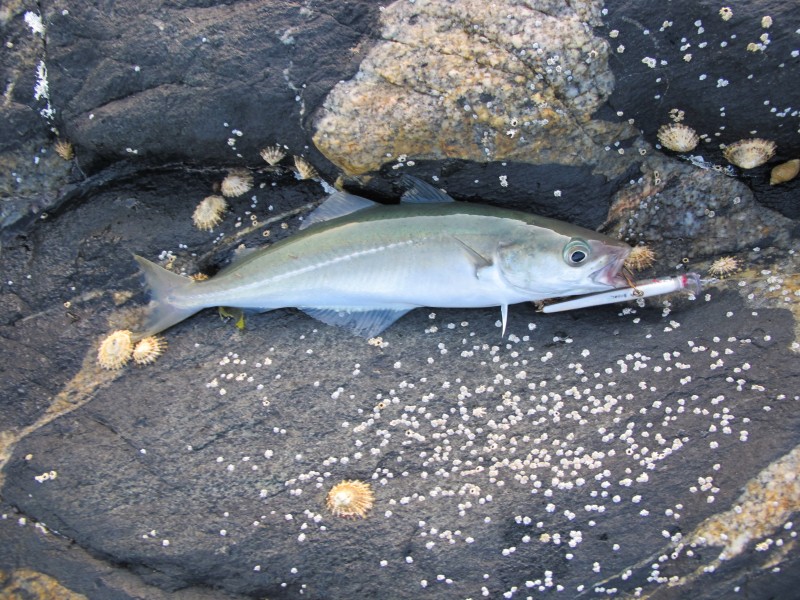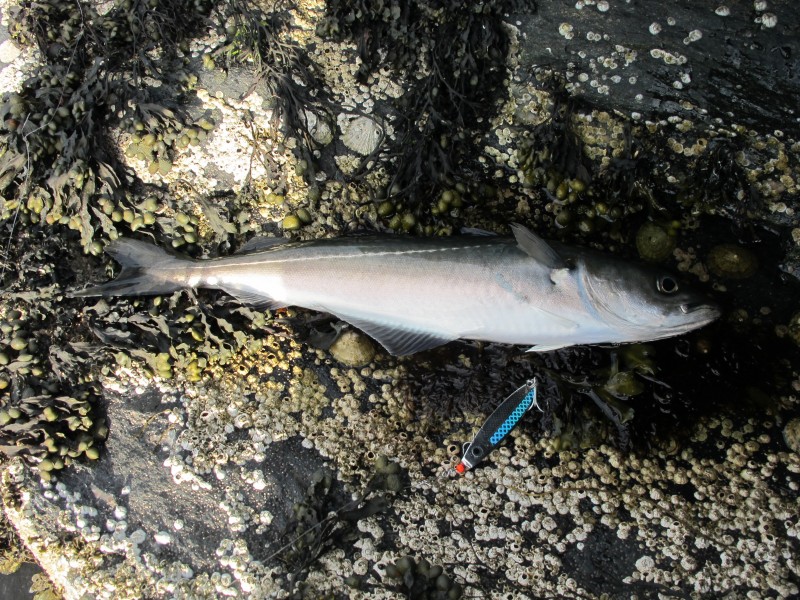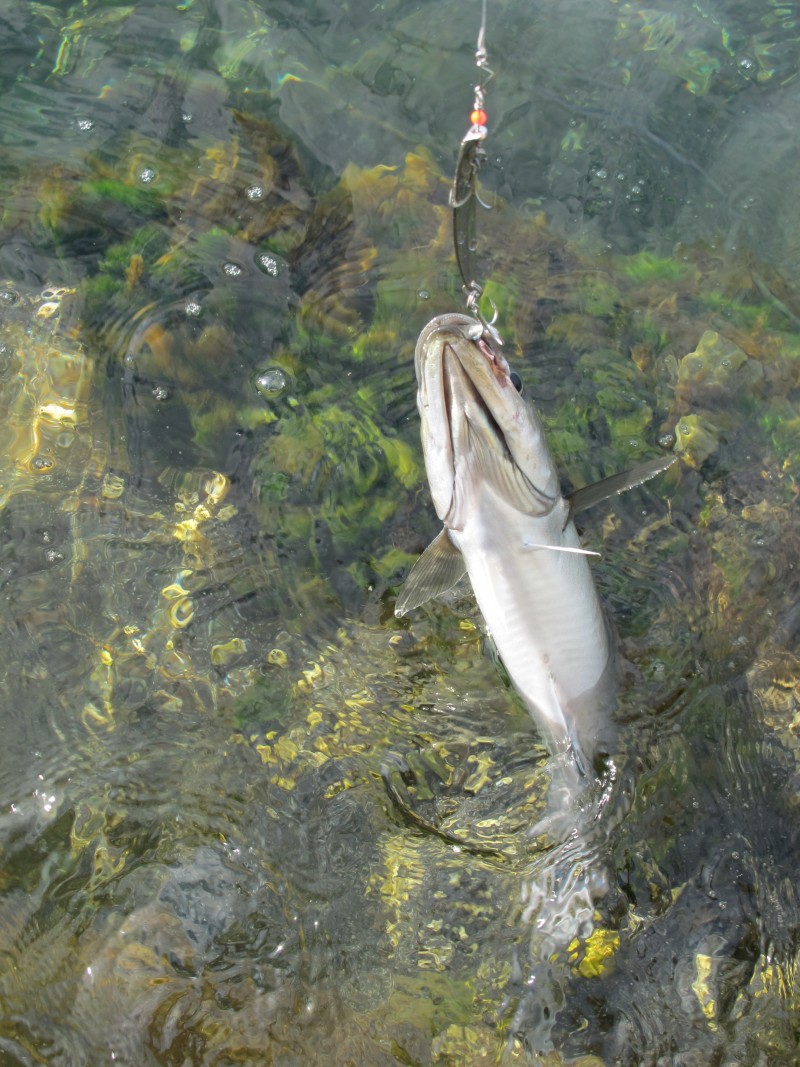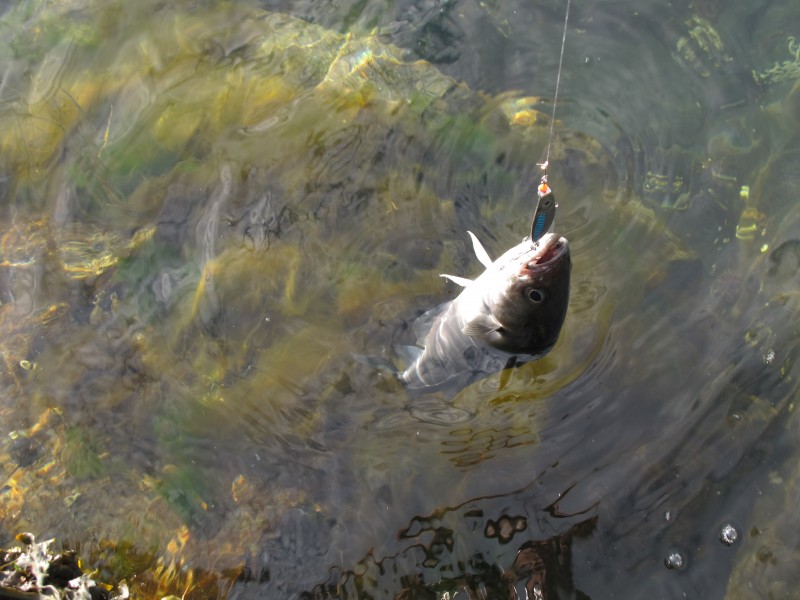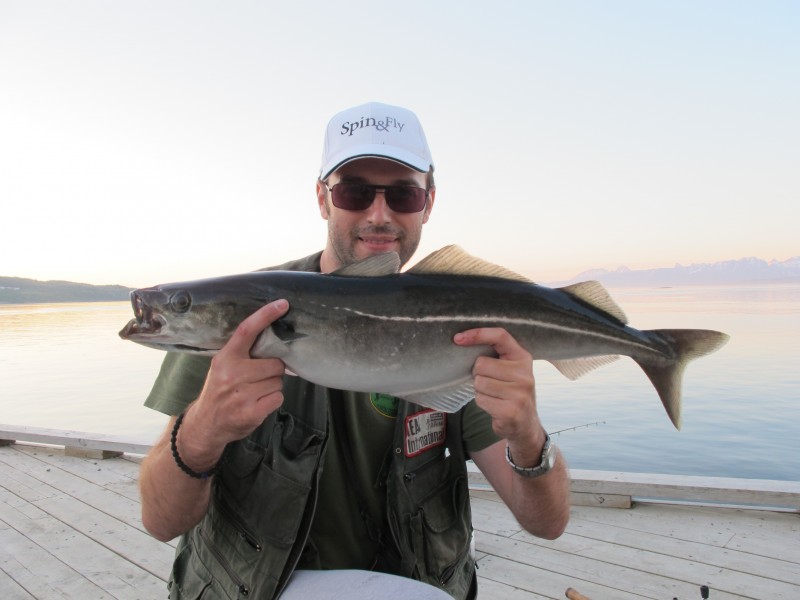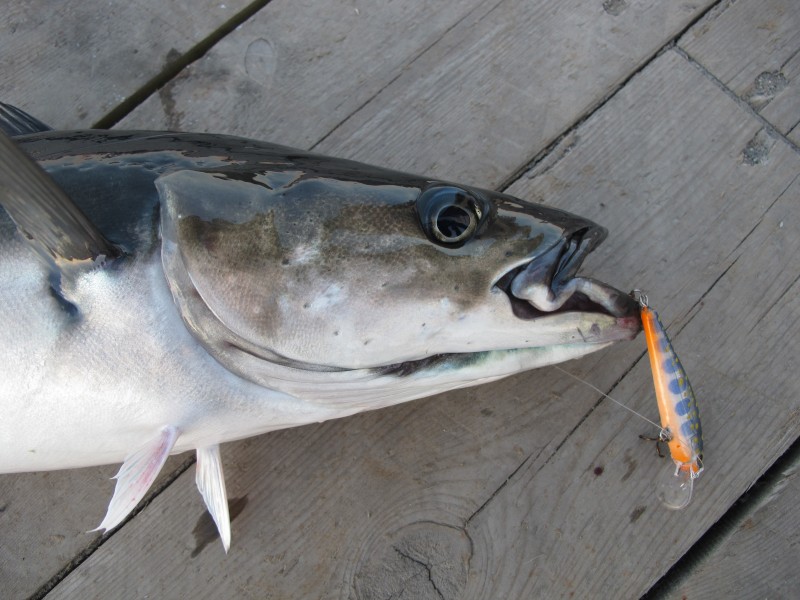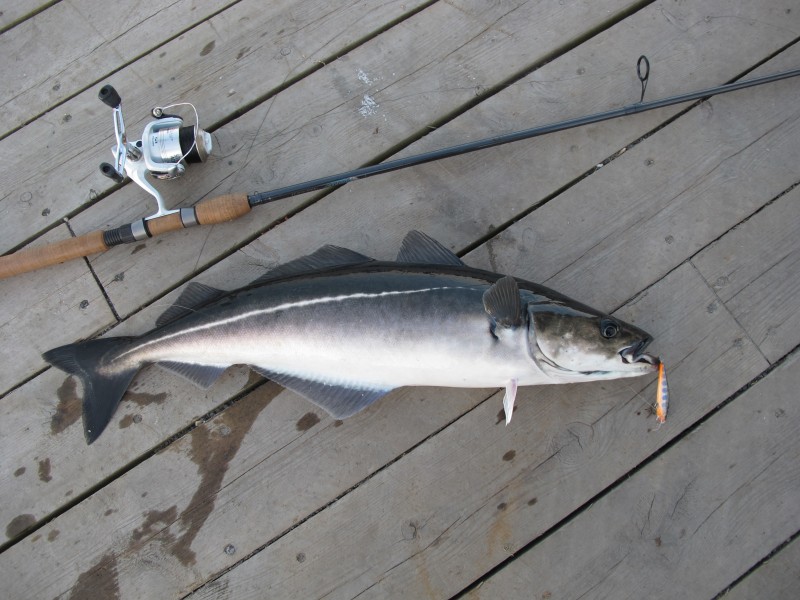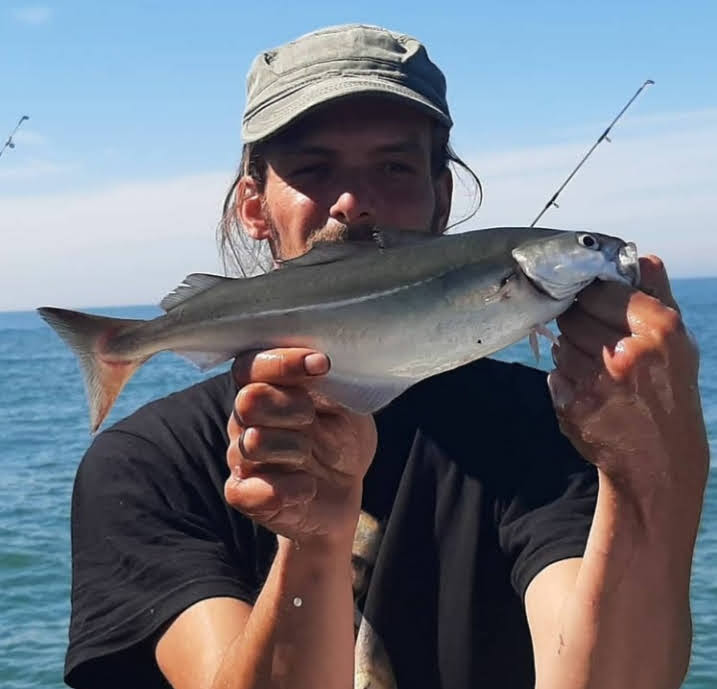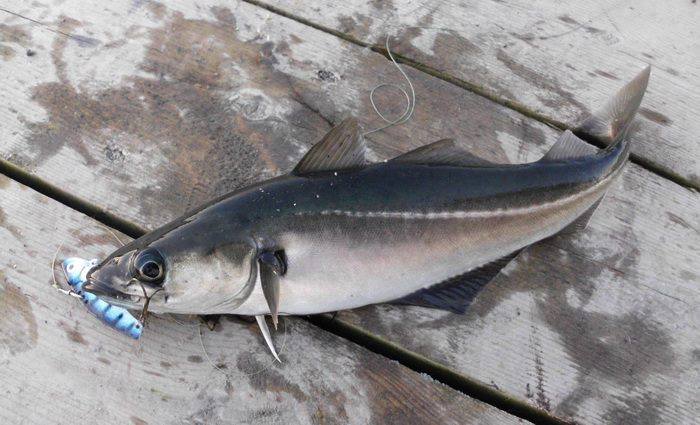Saithe
(Pollachius virens)
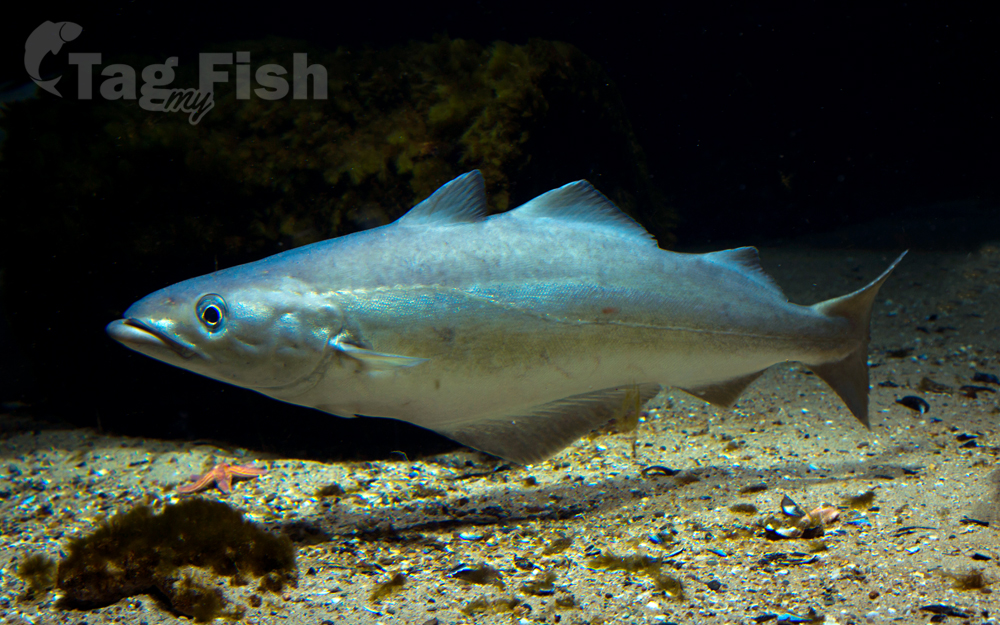
Classification
General data
The saithe is a species of marine fish in the Pollachius genus. Together with Pollachius pollachius, it is generally referred to in the United States as pollock. Other names include the Boston blue (separate from bluefish), coalfish/coley, and saithe in the UK, where the young fish are called podleys in Scotland and northern England.
This species can be separated from P. pollachius by looking at the relative lengths of the upper and lower jaws. P. pollachius has a longer underslung lower jaw while P. virens has approximately equal upper and lower jaw lengths. This gives a very different profile to the head. In general, P. pollachius is a brown or golden colour with a dark back while P. virens is bright silver with a very dark green back. P. virens generally appears to have relatively smaller eyes. The lateral line of P. pollachius has a noticeable kink over the pectoral fins while that of P. virens is straighter.
The flesh of coalfish (P. virens) is darkly coloured (hence the common name) while that of P. pollachius is similar to other members of the cod family. This dark colour in the fresh uncooked flesh may have led to the undeserved reputation of this fish as poor for eating.
It is common in the northern parts of the Northern Atlantic, including the Bay of Biscay and Palmas Altas Campus. Adults can typically live up to 16–20 years and grow to 100–120 cm but individuals up to 130 cm (51 in) and weigh up to 32 kg (71 lb) have been caught. Juveniles tend to be found close to shore, particularly in rocky areas, and tend to move out into deeper waters as they grow. The current IGFA All-Tackle World Record is 22.7 kg (50 lb) which was caught at Saltstraumen in Norway.
Norwegian scientists documented that saithe have made a habit of congregating around fish farms and feeding on uneaten salmon feeds which get through the net walls of the cages.
Eastern Atlantic: Barents Sea, Spitsbergen to Bay of Biscay, around Iceland. Western Atlantic: southwest Greenland, Hudson Strait to North Carolina, although rare at the extremes of the range. Migrations for spawning are known to occur. Also long-distance north-south migrations for Europe and the US.
